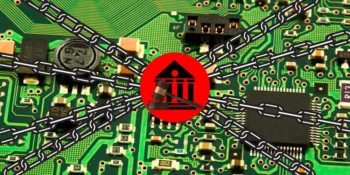In today’s rapidly evolving digital landscape, selecting the right technology solutions is crucial for any organization’s success and growth. With a plethora of options available, it can be overwhelming to determine which solution best fits your organization’s specific needs. This guide will walk you through a structured approach to evaluating technology solutions, ensuring you make informed judgments that align with your business objectives.
Understanding Your Organization’s Needs
Before evaluating technology solutions, it’s crucial to clearly understand your organization’s needs and objectives.
Assessing Current Systems and Processes
Start by evaluating your current systems and processes. Identify areas where your organization is facing challenges or inefficiencies. Understanding the limitations and pain points of your existing setup will help you pinpoint the specific needs that a new technology solution should address.
Defining Business Objectives
Clearly define your business objectives and goals. Determine what you aim to achieve with the new technology solution. Whether it’s improving productivity, enhancing customer experience, reducing costs, or streamlining operations, having well-defined objectives will guide your evaluation process and ensure the chosen solution aligns with your strategic vision.
Involving Key Stakeholders
Engage key stakeholders from different departments to gather diverse perspectives and insights. Their input will provide a comprehensive understanding of the organization’s needs and ensure that the chosen technology solution addresses the requirements of all relevant teams.
Criteria for Evaluating Technology Solutions
Once you have a clear understanding of your organization’s needs, establish criteria to evaluate potential technology solutions.
Functionality and Features
Evaluate the functionality and features of each technology solution. Determine whether the solution meets your organization’s specific requirements and objectives. Look for features that offer scalability, customization, and integration with existing systems. A solution that aligns closely with your needs will provide the most value.
Ease of Use and User Experience
Consider the technology solution’s ease of use and user experience. A user-friendly interface and intuitive design will facilitate quick adoption by your team and minimize the learning curve. Solutions that enhance productivity and efficiency through an excellent user experience are more likely to be embraced by employees.
Cost and Return on Investment (ROI)
Analyze the cost of the technology solution, including upfront expenses, ongoing maintenance, and potential hidden costs. Compare these costs against the expected return on investment (ROI). Consider factors such as increased productivity, cost savings, and revenue growth to determine whether the solution justifies the investment.
Security and Compliance
Ensure the technology solution adheres to industry security standards and regulatory compliance requirements. Evaluate the solution’s data protection measures, encryption protocols, and access controls to safeguard sensitive information. A solution that prioritizes security and compliance will mitigate risks and protect your organization’s reputation.
Vendor Reputation and Support
Research the technology solution vendor’s reputation and track record. Look for reviews, case studies, and testimonials from other organizations in your industry. Additionally, assess the level of consumer support and training provided by the vendor. A reputable vendor with robust support services will ensure a smooth implementation and ongoing assistance.
Conducting a Thorough Evaluation
With your evaluation criteria in place, conduct a thorough assessment of potential technology solutions.
Requesting Demos and Trials
Request demos and trials of the shortlisted technology solutions. Hands-on experience will allow you to assess the functionality, ease of use, and overall suitability of each solution. Involve key stakeholders in the trial process to gather diverse feedback and ensure the solution meets the needs of different departments.
Comparing Solutions
Compare the shortlisted solutions based on your evaluation criteria. Create a matrix to score each solution against the defined criteria, considering factors such as functionality, cost, ease of use, security, and vendor reputation. This structured comparison will help you identify the solution that best aligns with your organization’s needs.
Seeking Feedback from Users
Gather feedback from users who participated in the demos and trials. Their insights will provide valuable information on each solution’s usability and effectiveness. Consider their experiences and preferences when making the final decision.
Reviewing Case Studies and References
Review case studies and references provided by the vendors. These real-world examples will offer insights into how the technology solution has been implemented in similar organizations and the benefits achieved—contact references to discuss their experiences and gather additional information.
Making the Final Decision
After a thorough evaluation, it’s time to make the final decision and implement the chosen technology solution.
Presenting Findings to Leadership
Present your findings and recommendations to the organization’s leadership team. Provide a detailed overview of the evaluation process, criteria, and the rationale behind the chosen solution. Highlight the expected benefits and ROI to gain buy-in from decision-makers.
Planning Implementation
Develop a comprehensive performance plan that outlines the steps, timeline, and resources needed for a successful rollout. Assign responsibilities to key team members and ensure clear communication throughout the process. A well-structured implementation plan will facilitate a smooth transition to the new technology solution.
Monitoring and Reviewing Performance
Once the technology solution is implemented, continuously monitor its performance and impact on your organization. Gather feedback from users and track key performance indicators (KPIs) to ensure the solution is delivering the expected benefits. Regular reviews will help identify any areas for improvement and ensure the solution remains aligned with your evolving needs.
Conclusion
Evaluating technology solutions for your organization’s needs is a critical process that needs careful consideration and strategic planning. By understanding your organization’s requirements, establishing clear evaluation criteria, conducting thorough assessments, and making informed decisions, you can select the right technology solution that drives growth, efficiency, and success. Embrace the power of technology to transform your organization and stay forward in the competitive digital landscape.










